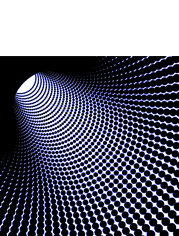September 2018
Spotlight Summary by Simone Lolli
Spectrally resolved thermal emission of atmospheric gases measured by laser heterodyne spectrometry
The matter constituting the universe continuously interacts with
electromagnetic radiation; each molecule in thermal equilibrium with its
environment emits a spectrum of electromagnetic radiation (the
so-called thermal radiation) that peaks towards shorter
wavelengths as the temperature grows (the famous Wien’s displacement
law). The blackbody spectrum is modulated for each gas by its
absorptivity, so that thermal emission spectra can be used to identify
molecules. In their study, Hoffmann and coauthors aim to fully
characterize Earth’s thermal infrared radiation of atmospheric gases at
very high spectral resolution. This would permit quantitative assessment
of important thermo-physical information on the atmospheric gases:
temperature, pressure, local thermodynamic equilibrium (LTE), and
velocity. For the first time, the authors of this Optics Letters
article applied the laser heterodyne spectro-radiometry (LHR) technique
to measure LTE emission lines of terrestrial atmospheric gases with
high-spectral resolution (up to 0.02 cm-1). The LHR
spectroscopy technique was previously used only to resolve predominantly
non-LTE gas emissions in the atmospheres of other planets and never on
Earth—this despite its operational advantages, as the LHR spectroscopy
technique doesn’t require solar illumination, so that it can operate
both at night and under a cover of clouds. This innovative development
is an elegant solution, and cheaper with respect to the complex and
large cooled spectrometers used until now to resolve the spectral lines
with poor radiance contrast emitted by atmospheric molecules at LTE.
You must log in to add comments.
Add Comment
You must log in to add comments.


Article Information
Spectrally resolved thermal emission of atmospheric gases measured by laser heterodyne spectrometry
Alex Hoffmann, Marko Huebner, Neil Macleod, and Damien Weidmann
Opt. Lett. 43(16) 3810-3813 (2018) View: Abstract | HTML | PDF